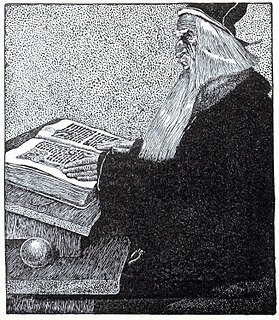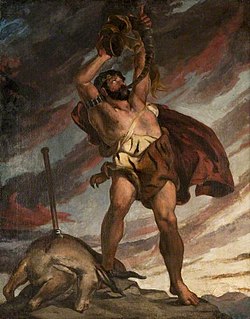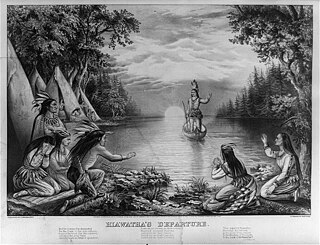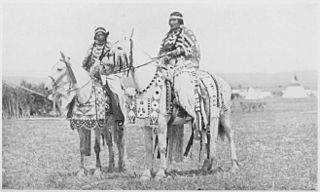 W
WA Cycle of the West – dzieło poetyckie amerykańskiego autora Johna G. Neihardta. Utwór składa się z pięciu poematów epickich: The Song of Three Friends (1919), The Song of Hugh Glass (1915), The Song of Jed Smith (1941), The Song of the Indian Wars (1925) i The Song of the Messiah (1935). Wydanie zbiorcze ukazało się w 1949. Utwór opowiada o osadnictwie na preriach i wysiedlaniu Indian z ich tradycyjnej ojczyzny. Napisanie wszystkich części eposu zajęło autorowi dwadzieścia dziewięć lat. Utwór jest napisany dystychem bohaterskim, czyli parzyście rymowanym pentametrem jambicznym.
 W
WA Man of Destiny: Being the Story of Abraham Lincoln; an Epic Poem – poemat Ernesta Linwooda Staplesa poświęcony szesnastemu amerykańskiemu prezydentowi Abrahamowi Lincolnowi. Utwór został opublikowany nakładem Lincoln Publishing Company w Shelton w stanie Connecticut w 1904. Epos ma charakter biograficzny. Został napisany wierszem białym.
 W
WAn Address to Americans. A Poem in Blank Verse – utwór poetycki mormońskiego pisarza Jamesa Mulhollanda (1804-1839), opublikowany w 1841 w Nauvoo nakładem E. Robinsona.
 W
WAn Idyl of Work – poemat amerykańskiej poetki Lucy Larcom, opublikowany w Bostonie w 1875 nakładem oficyny James R. Osgood and Company. Utwór został opatrzony dedykacją dla pracujących kobiet: To working women, this book is dedicated by one of their sisterhood. Poetka wykorzystała w nim swoje własne doświadczenia z czasu, gdy pracowała w fabryce tekstylnej. Jest on jej pierwszym i jedynym utworem epickim. Został napisany w większości wierszem białym, czyli nierymowanym pentametrem jambicznym, to znaczy sylabotonicznym dziesięciozgłoskowcem, w którym akcenty padają na parzyste sylaby wersu.
 W
WClarel: A Poem and Pilgrimage in the Holy Land – epos amerykańskiego powieściopisarza i poety Hermana Melville’a, opublikowany w 1876 nakładem nowojorskiej oficyny G.P. Putnam & Company. Utwór opowiada o pielgrzymce tytułowego bohatera do Ziemi Świętej. Motyw podróży jest pretekstem do teologicznych rozważań o wierze i wątpliwościach religijnych. W przeciwieństwie do wielu innych dzieł, popularnych w swoich czasach, a później zapomnianych, epos Melville’a został doceniony dopiero w XX wieku. Wcześniej był przyjmowany z rezerwą. Robert Penn Warren nazwał poemat prekursorskim wobec Ziemi jałowej T.S. Eliota. Dzieło ma charakter w dużym stopniu autobiograficzny. Postać Vine'a jest najprawdopodobniej portretem przyjaciela autora, pisarza Nathaniela Hawthorne’a.
 W
WColumbia: an Epic Poem on the Late Civil War between the Northern and Southern States of North America – poemat amerykańskiego poety Franka C. Algertona, opublikowany w Bostonie w 1893 nakładem oficyny Press of Rockwell and Churchill. Utwór jest jednym z wielu utworów literackich opowiadających o wojnie secesyjnej. Został zadedykowany Wielkiej Armii Republiki. Składa się z Preludium (Prelude) i ośmiu ksiąg zatytułowanych Convention, Abraham Lincoln and his Cabinet, The Bombardment and Fall of Fort Sumter, Columbia and the Catalogue of the Northern Army, Slavonia and the catalogue of the Southern Armies, The Declaration of War, Battle of Manassas i The Battle of the States. Każda księga jest poprzedzona Argumentem (streszczeniem). Utwór został napisany wierszem rymowanym.
 W
WColumbus: An Epic Poem, Giving an Accurate History of the Great Discovery in Rhymed Heroic Verse – poemat Samuela Jeffersona, opublikowany w Chicago w 1892, nakładem oficyny S.C. Griggs and Company. Utwór, jak wskazano w podtytule, jest napisany wierszem rymowanym. Składa się z dwunastu ksiąg. Rozpoczyna się apostrofą do głównego bohatera, odkrywcy Ameryki, Krzysztofa Kolumba.
 W
WConquistador (Konkwistador) – poemat epicki amerykańskiego poety Archibalda MacLeisha, opublikowany w 1932, opowiadający o podboju Meksyku przez Hiszpanów dowodzonych przez Ferdynanda Corteza. Utwór został wyróżniony Nagrodą Pulitzera w dziedzinie poezji za 1933.
 W
WCuster – poemat amerykańskiej poetki Elli Wheeler Wilcox opublikowany w tomie Custer, and Other Poems, wydanym w 1896.
 W
WEvangeline – epos amerykańskiego poety Henry’ego Wadswortha Longfellowa, wydany po raz pierwszy w 1847.
 W
WGuadaloupe: A Tale of Love and War – poemat epicki amerykańskiego żołnierza i poety Williama F. Smalla, opublikowany bez podania nazwiska autora w Filadelfii w 1860, nakładem oficyny Jas. B. Smith & Co. Tożsamość autora potwierdza dziewiętnastowieczna amerykańska bibliografia. Poeta podpisał się pod utworem jako uczestnik kampanii z lat 1846-7. Swoje dzieło zadedykował generałowi George'owi Cadwaladerowi z Filadelfii. Był on dowódcą poety, który napisał: A simple desire of expressing the sincere esteem of one who was happy to serve with and under you, in the late war with Mexico, and who was proud to know you in the more peaceful walks of civil life, is the sole motive of the tribute. W roli motta wykorzystał całą jedną strofę z czternastej pieśni Don Juana George'a Gordona Byrona.
 W
WJudith and Holofernes – poemat epicki amerykańskiego poety Thomasa Baileya Aldricha, opublikowany w 1896. Ukazał się nakładem oficyny Houghton, Mifflin and Company. Utwór jest oparty na biblijnej Księdze Judyty. Składa się z trzech ksiąg, Judith in the Tower, The Camp of Asshur i The Flight (Ucieczka). Został napisany wierszem białym, czyli nierymowanym pentametrem jambicznym, czyli sylabotonicznym dziesięciozgłoskowcem, w którym akcenty padają na parzyste sylaby wersu.Unheralded, like some tornado loosed Out of the brooding hills, it came to pass That Holofernes, the Assyrian, With horse and foot a mighty multitude, Crost the Euphrates, ravaging the land To Esdraelon, and then hawk-like swoopt On Bethulia : there his trenches drew, There his grim engines of destruction set And stormed the place;
 W
WLilith. The Legend of the First Woman – poemat epicki amerykańskiej poetki Ady Langworthy Collier, będący jej najbardziej znanym dziełem, opublikowany w 1885. Składa się z pięciu ksiąg. Bohaterką jest Lilith, rzekoma pierwsza żona biblijnego Adama.Pure as an angel's dream shone Paradise. Blue mountains hemmed it round; and airy sighs Of rippling waters haunted it. Dim glades, And wayward paths o'erflecked with shimmering shades, And tangled dells, and wilding pleasances, Hung moist with odors strange from scented trees. Sweet sounds overbrimmed the place; and rare perfumes, Faint as far sunshine, fell 'mong verdant glooms. In that fair land, all hues, all leafage green Wrapt flawless days in endless summer-sheen.
 W
WMerlin – poemat amerykańskiego poety Edwina Arlingtona Robinsona opublikowany w 1917. Stanowi on pierwszą część trylogii arturiańskiej, której kolejnymi częściami są Lancelot (1920) i Tristram (1927). Utwór jest napisany wierszem białym, formą często wykorzystywaną przez poetę.
 W
WNew American Epic Poem on the Discovery of America by Christopher Columbus – poemat epicki opublikowany w 1868. Jego autorem był M.D.C. Luby, były profesor języków starożytnych i współczesnych na Uniwersytecie Notre Dame w Indianie. Utwór ukazał się nakładem wydawnictwa Daily Minnesota Volksblatt Print w Saint Paul. Poeta zadedykował go swojemu przyjacielowi, wielebnemu J.C. Carrierowi. Poemat jest jednym z wielu dzieł o odkryciu Ameryki przez Krzysztofa Kolumba. Utwór został napisany wierszem białym, czyli nierymowanym pentametrem jambicznym.
 W
WNimrod – epos amerykańskiej poetki Anny Hempstead Branch, opublikowany w tomiku Rose of The Wind, and Other Poems, wydanym w 1910. Utwór jest oparty na historii biblijnej. Został napisany wierszem białym, czyli nierymowanym pentametrem jambicznym. Bohaterem dzieła jest wspomniany w Księdze Rodzaju legendarny myśliwy Nimrod (Nemrod), syn Kusza i prawnuk Noego.One time, in Shinar, when the setting sun, With all his thousand javelins, drove the day Before him and the myriad tribes of light Departed sullenly with bleeding feet, Great Nimrod, the strong huntsman of the Lord, Returning hot with bloodshed from the chase, Beheld great Babel, wrathful, beautiful, Burn like a blood-red cloud upon the plain. Then Nimrod, when he saw it, laughed aloud, And turning to his warriors cried, "Behold How those steep battlements defy the cloud With starry dome and precipice of brass. Their sword-like minarets have stabbed the sun.
 W
WPieśń o Hajawacie – epos amerykańskiego poety romantycznego Henry'ego Wadswortha Longfellowa, będący opracowaniem legend rdzennych mieszkańców Ameryki. Sam poeta uważał swoje dzieło za indiańską Eddę. Poemat opiera się na relacjach etnograficznych misjonarza Johna Heckeweldera. Poeta wykorzystał również twórczość Jane Johnston Schoolcraft.
 W
WPocahontas – poemat amerykańskiej poetki Virginii Carter Castleman, opublikowany w 1907 z okazji trzechsetlecia założenia kolonii Jamestown. Utwór składa się z ośmiu części The Little Princess, The Wizard, Smith and Newport, Coronation of Powhatan, Guardian Angel, The Parting, Pocahontas and John Rolfe i London Town. Bohaterką jest indiańska księżniczka Pocahontas, jedna z pierwszych rdzennych Amerykanek, które przybyły do Europy.Many dark-eyed children played among the rushes By the waters of the inland, plain-like marshes, Made them water babies of the tall brown cat-tails, Cradled in the baskets of the plaited willows. Of them all was none more gleeful, none more artless Than the little Matoax, dearest of the daughters Of the mighty Werowance, Powhatan the warrior Ruler of the tribes, from whom was named the river And the wigwam village and the dark-skinned natives. None in all the land, from mountain unto sea, None more brave, more stern, and none more feared than he.
 W
WRedemption, a Poem – epos religijny amerykańskiego poety katolickiego (konwertyty) Johna Delavau Bryanta. Utwór powstał z inspiracji podróżą do Ziemi Świętej, a w szczególności Jerozolimy w momencie, kiedy autor rozważał zmianę wyznania z ewangelickiego na rzymskokatolickie. Został wydany w 1857. Składa się z dwunasty ksiąg. Jest napisany wierszem białym, czyli nierymowanym pentametrem jambicznym, to znaczy sylabotonicznym dziesięciozgłoskowcem, w którym akcenty spoczywają na parzystych sylabach wersu. jest oparty na Biblii i tradycji katolickiej. Był porównywany do Raju utraconego Johna Miltona.The Man divine, of Adam's race the chief, Sing heav'nly Muse; tell how round Solyma He walk'd, how knock'd at her imperial gates, And o'er her ruin, long impending, hung, With tear and earnest pleading oft besought, Fain to avert destruction from her head; Nor her's alone, though first to hear his voice, Through cov'nant grace with him, whose faithfulness Was with the promise bless'd, but all who feel Sin's cumulative load, who inly groan, And seek deliv' ranee from her dire enthrall; The first to hear, yet obdurate reject, The only Hope whence safety could depend.
 W
WSiege of Newport – poemat epicki amerykańskiego poety Thomasa Coffina Amory’ego, opublikowany w 1888 nakładem wydawnictwa John Wilson and Son. Utwór dzieli się na 10 części, Introduction, Landing, Sea Fight, The March, The Siege, The Battle, Iroquois, Savannah, Surrender i Centennial. Opowiada o wydarzeniach z czasów amerykańskiej wojny o niepodległość.Should he who reads these unpretending lines Inquire why venture on so bold a theme, Ours but to follow; Providence designs We tread the paths, the paths of duty seem. If circumstance beyond our own control Guide, shape resistlessly our aims and ends, But weak the faith, if our poor human soul Upon its own unaided strength depends.
 W
WThe Battle of Gettysburg – poemat Fredericka D. McMillena, opublikowany w tomie The Battle of Gettysburg, and Other Poems, wydanym w 1919. Utwór, napisany strofą ośmiowersową z rymami parzystymi, opowiada o najważniejszej bitwie wojny secesyjnej, która rozegrała się w dniach 1−3 lipca 1863.
 W
WThe Battle of Manila Bay, May First, Eighteen Hundred & Ninety-eight; an Epic Poem - utwór poetycki kapitana amerykańskiej marynarki wojennej Williama Wilsona Galta, opublikowany w Norfolk w stanie Virginia w 1900. Poemat został zadedykowany wszystkim, którzy uczestniczyli w Bitwie w Zatoce Manilskiej, przyczyniając się do zwycięstwa. Bitwa w Zatoce Manilskiej na Filipinach rozegrała się podczas wojny amerykańsko-hiszpańskiej. Utwór jest napisany wierszem jambicznym czterostopowym, podzielonym na nieregularne sekcje.
 W
WThe Columbiad (Kolumbiada) – epos amerykańskiego poety Joela Barlowa (1754–1812), jeden z pierwszych obszernych poematów epickich w literaturze Stanów Zjednoczonych, który w zamyśle autora miał się stać epopeją narodową Amerykanów. Utwór ma charakter proroczej wizji, jakiej doświadcza przebywający w więziennej celi Krzysztof Kolumb. Przepowiednie dotyczą dalszych dziejów świata, a zwłaszcza odkrytej przez niego dla Europejczyków Ameryki.
 W
WThe Gospel Tragedy – poemat epicki amerykańskiego poety Thomasa Brockwaya, opublikowany w 1795. Utwór, pozostający pod wyraźnym wpływem epiki religijnej Johna Miltona jest napisany wierszem białym.
 W
WThe Siege of Monterey. A Poem – poemat epicki dziewiętnastowiecznego amerykańskiego poety Williama Clarka Falknera, opublikowany w 1851. Utwór ukazał się własnym nakładem autora. Jest napisany strofą ośmiowersową. Opowiada o wojnie między Stanami Zjednoczonymi a Meksykiem, a konkretnie o bitwie pod Monterrey, która miała miejsce w 1846. Został oparty na wojennych doświadczeniach autora.Come, ye tyrants and haughty kings. Stoop and listen here to little things; I seize my pen to write a little story Of love, loar, blood, lust, and glory. I will write of Taylor and his thunder — How he filled earth with awe and wonder. And all his gallant deeds, generally speaking — How he became President without his seeking.
 W
WThe White Cliffs – utwór amerykańskiej poetki Alice Duer Miller, siostry Caroline King Duer, opublikowany w 1940. Poemat ten, określany terminem long poem lub novel in verse opowiada historię miłosną. Rzecz dzieje się w czasie I wojny światowej. Bohaterami są Susan Dunne, Amerykanka przebywająca w Wielkiej Brytanii i Anglik o imieniu John. Anglik ginie w przededniu zawieszenia broni. Po dwudziestu latach, kiedy syn Susan i Johna, Percy, jest już dorosły, wybucha kolejna wojna. Susan martwi się, że syn podzieli los ojca. Poemat okazał się wielkim sukcesem wydawniczym. W ciągu czterech lat sprzedało się 700 000 kopii. Utwór odegrał dużą rolę w kształtowaniu świadomości czytelników w okresie, kiedy nawiązywano sojusz brytyjsko-amerykański skierowany przeciwko hitlerowskim Niemcom. Poemat został zekranizowany w 1944 przez Clarence’a Browna.I have loved England, dearly and deeply, Since that first morning, shining and pure, The white cliffs of Dover I saw rising steeply Out of the sea that once made her secure. I had no thought then of husband or lover, I was a traveller, the guest of a week; Yet when they pointed 'the white cliffs of Dover', Startled I found there were tears on my cheek. I have loved England, and still as a stranger, Here is my home and I still am alone. Now in her hour of trial and danger, Only the English are really her own.
 W
WTraits of the Aborigines – poemat dziewiętnastowiecznej amerykańskiej poetki Lydii Sigourney, opublikowany w 1822. Utwór porusza tematykę indiańską. Został napisany wierszem białym, czyli nierymowanym pentametrem jambicznym, to znaczy sylabotonicznym dziesięciozgłoskowcem, w którym akcenty metryczne padają na parzyste sylaby wersu. Ten rodzaj wiersza jest w literaturze angielskiej i anglojęzycznej powszechnie wykorzystywany zwłaszcza w wielkiej epice i dramacie począwszy od XVI wieku, kiedy zastosował go Henry Howard, hrabia Surrey. Utwór rozpoczyna się wspomnieniem czasów sprzed przybycia Europejczyków kiedy Indianie panowali w Ameryce niepodzielni od dalekiej Północy po Ziemię Ognistą na południu i od Atlantyku na wschodzie po Pacyfik na zachodzie.
 W
WTrial of Christ in Seven Stages – poemat epicki amerykańskiego poety Johna Brayshawa Kaye’a, opublikowany w 1909. Jest drugą po poemacie Vashti: a Poem in Seven Books epicką próbą autora. Podobnie jak tamten epos, utwór jest oparty na przekazie Biblii, ale nie Starego Testamentu, tylko Ewangelii. Opowiada o męce i śmierci Jezusa Chrystusa. Utwór został napisany wierszem białym, czyli nierymowanym pentametrem jambicznym, to znaczy sylabotonicznym dziesięciozgłoskowcem, w którym akcenty padają na parzyste sylaby wersu. Ten rodzaj wiersza w literaturze angielskiej począwszy od XVI wieku jest podstawowym wzorcem metrycznym dramatu i największej epiki. Występował on między innymi w dramaturgii Thomasa Kyda, Christophera Marlowe’a i Williama Szekspira, jak również w epice Johna Miltona, Williama Wordswortha, Edwina Atherstone’a, Johna Keatsa, Alfreda Tennysona i Roberta Browninga.Have I done mortal wrong? My heart is troubled And my soul haunted by a thousand doubts. But a short year agone, across the Lake Straight from Capernaum on the other side, Near to Bethsaida-Julias, on the grass, After a term of teaching and much toil, Healing and pointing out the Heavenly Way, Time passed in pinioned flight till evening shades Stretched lengthening eastward, and the night was near, When Christ, discerning the great multitude, More than five thousand eager followers, All absent from their homes, and much an hungred, Ordered provision to be spread for them, Fitly, and there, along the greening slopes;
 W
WYamoyden, a Tale of the Wars of King Philip – amerykański epos napisany wspólnie przez Jamesa Wallisa Eastburna i Roberta Charlesa Sandsa. James Eastburn zmarł przed ukończeniem dzieła. Robert Sands zredagował poemat, napisał, Proem, będący elegią na cześć przyjaciela i opublikował utwór w 1820.Friend of my youth! with thee began the love Of sacred song; the wont, in golden dreams, Mid classic realms of splendours past to rove, O'er haunted steep, and by immortal streams; Where the blue wave, with sparkling bosom gleams Round shores, the mind's eternal heritage, For ever lit by memory's twilight beams; Where the proud dead, that live in storied page, Beckon, with awful port, to glory's earlier age.